Summer’s here, at long last! The Sun is setting late now, and the nights are cut short, but if you're an astronomer or even if you're just getting started in stargazing there’s still plenty to look at, even some old friends!
We've put together a list of our top 5 summer constellations and asterisms you can spot in the night sky if you live in the northern hemisphere.
The seasons change, but the stars don’t switch out right away. They take their time making their way across the sky, so some of these have been with us for a while already.
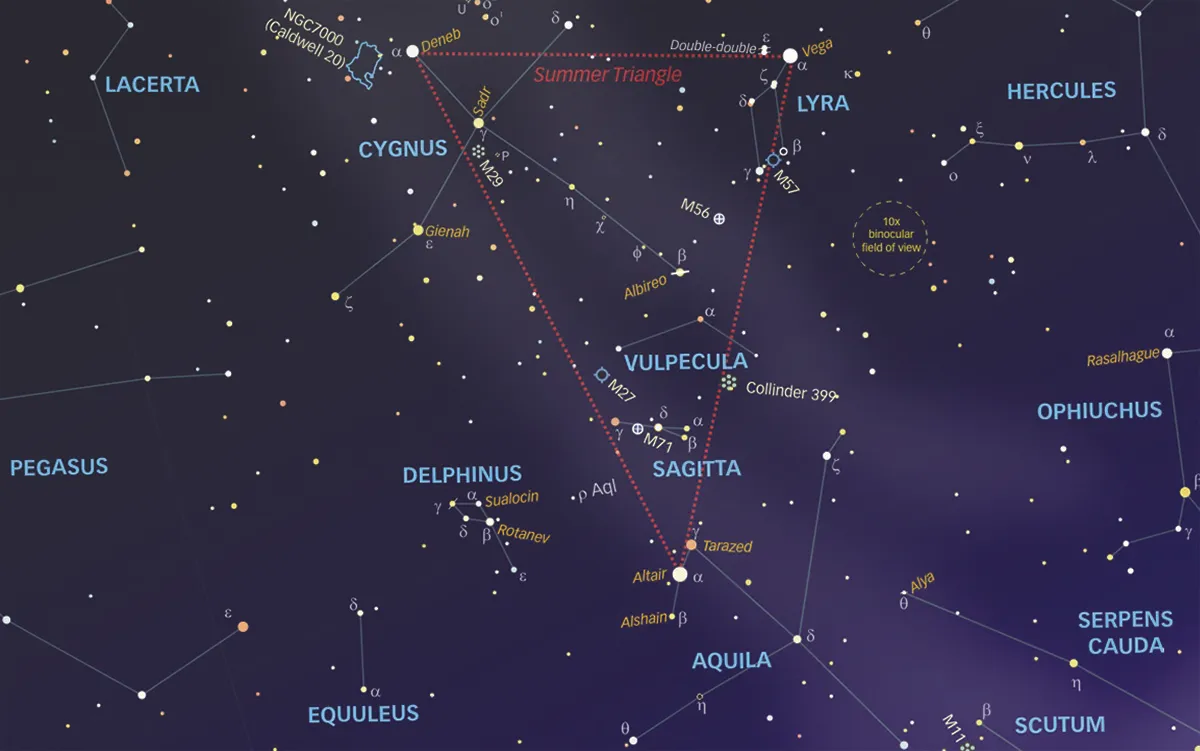
If you need help locating these summer constellations and asterisms, you can use the information below to help you star-hop and find them more easily. Or if you're really struggling you can always download an astronomy app such as the free software Stellarium, which will show you exactly where to look.
And if you do use your smartphone to view the night sky, don't forget to switch your phone to red-light mode. Your eyes will adapt to the dark over time and you'll be able to see more stars, but there's nothing like a bright white light to ruin your dark-adapted vision!
To celebrate summer and good things to come, here are my top 5 summer constellations and asterisms.
And for more info on constellations and asterisms, read my guide constellations and asterisms: what's the difference?
Find out which constellations are visible all year round in our guide to circumpolar constellations.
1
The Summer Triangle
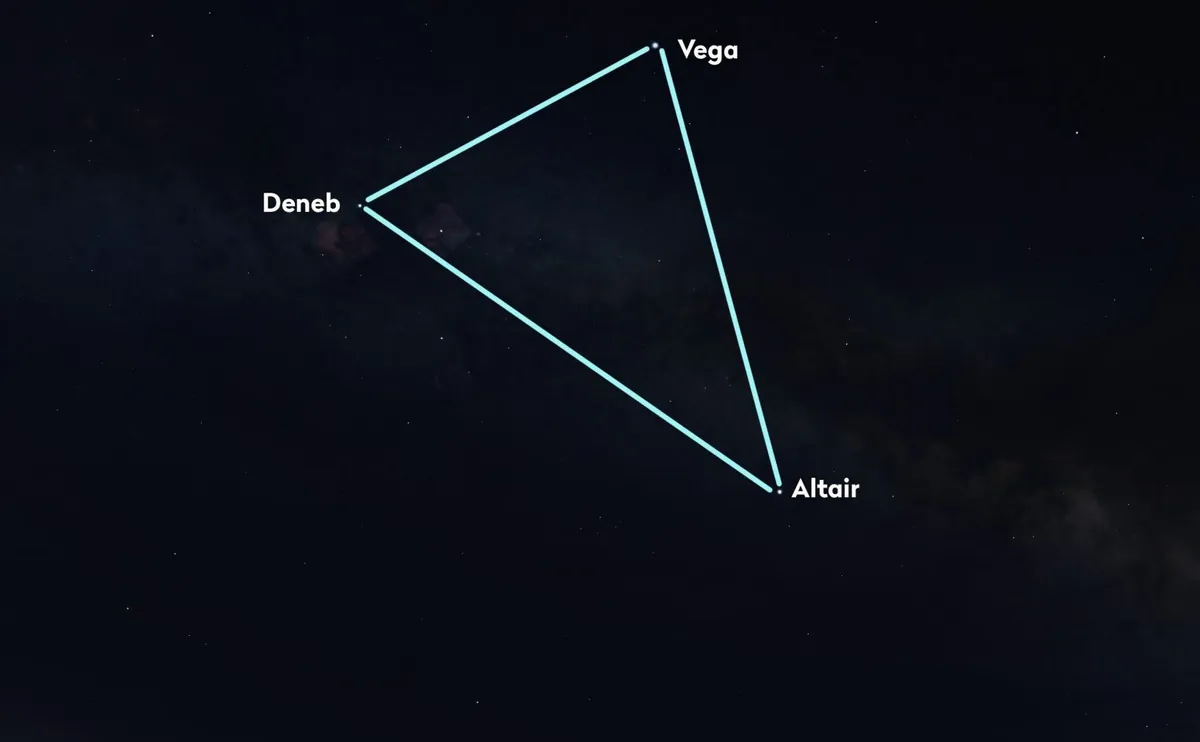
When is it visible? High in the south and southeast all night through the summer
There’s no place better to start in the summer skies than with the spectacular Summer Triangle. The Triangle isn’t a constellation, but an asterism – an unofficial but recognisable group of stars.
At two of its corners are Altair (in the constellation Aquila, the eagle) and Vega (in Lyra, the harp). They’re about 16 and 25 lightyears away; just down the street as these things go.
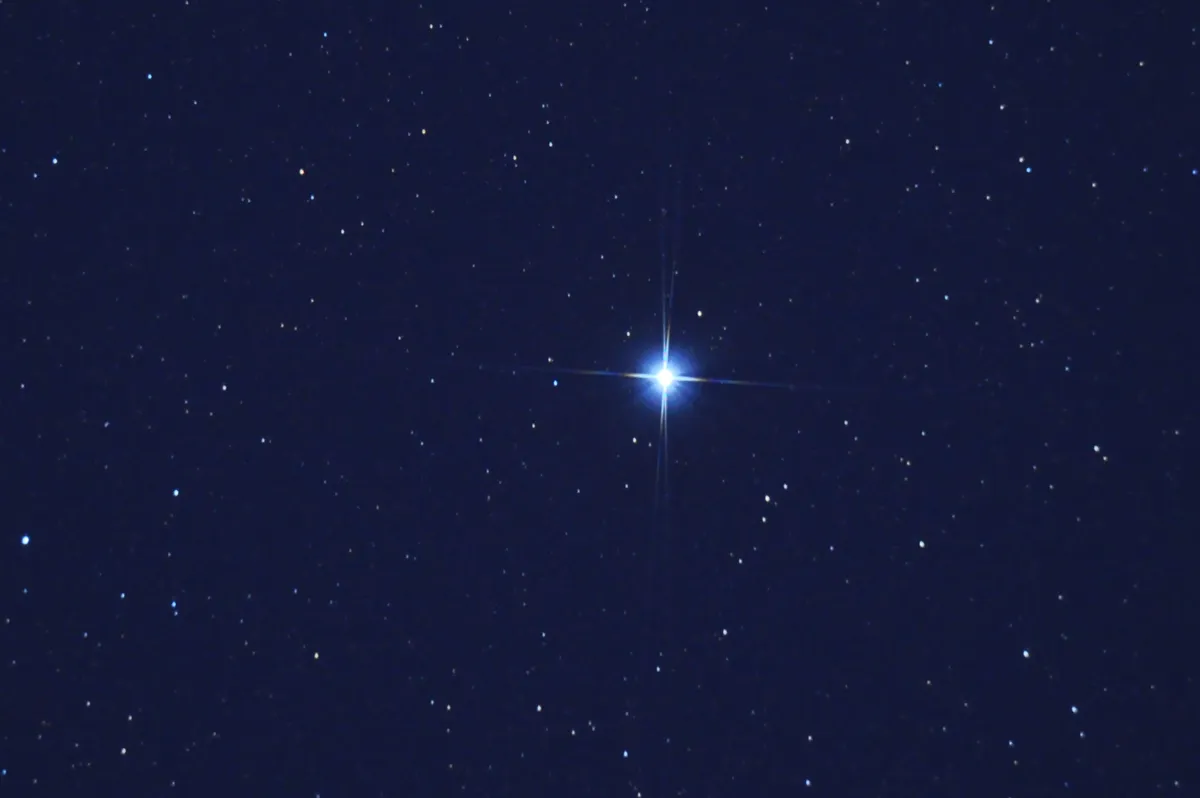
Deneb, the tail of Cygnus, the swan, is an astounding 2,000 lightyears away or so, and is one of the most distant stars you can see with the naked eye.
It’s amazing to watch the eagle and the swan soar high overhead as the triangle crosses the sky all summer, but believe it or not, these stars will even be with us into autumn and winter.
2
Scorpius

When is it visible? Low along the southern horizon all summer
For my money, no single group of stars is more summery than Scorpius, the scorpion. It’s one of the few in the sky that actually kind of looks like what we want.
Look for Antares, the bright red giant star (about 550 lightyears away) at its heart, and then imagine the stars Acrab ("a Crab? But… you said it’s a scorpion!"), Dschubba, and Nur as its head and claws.
3
Sagittarius
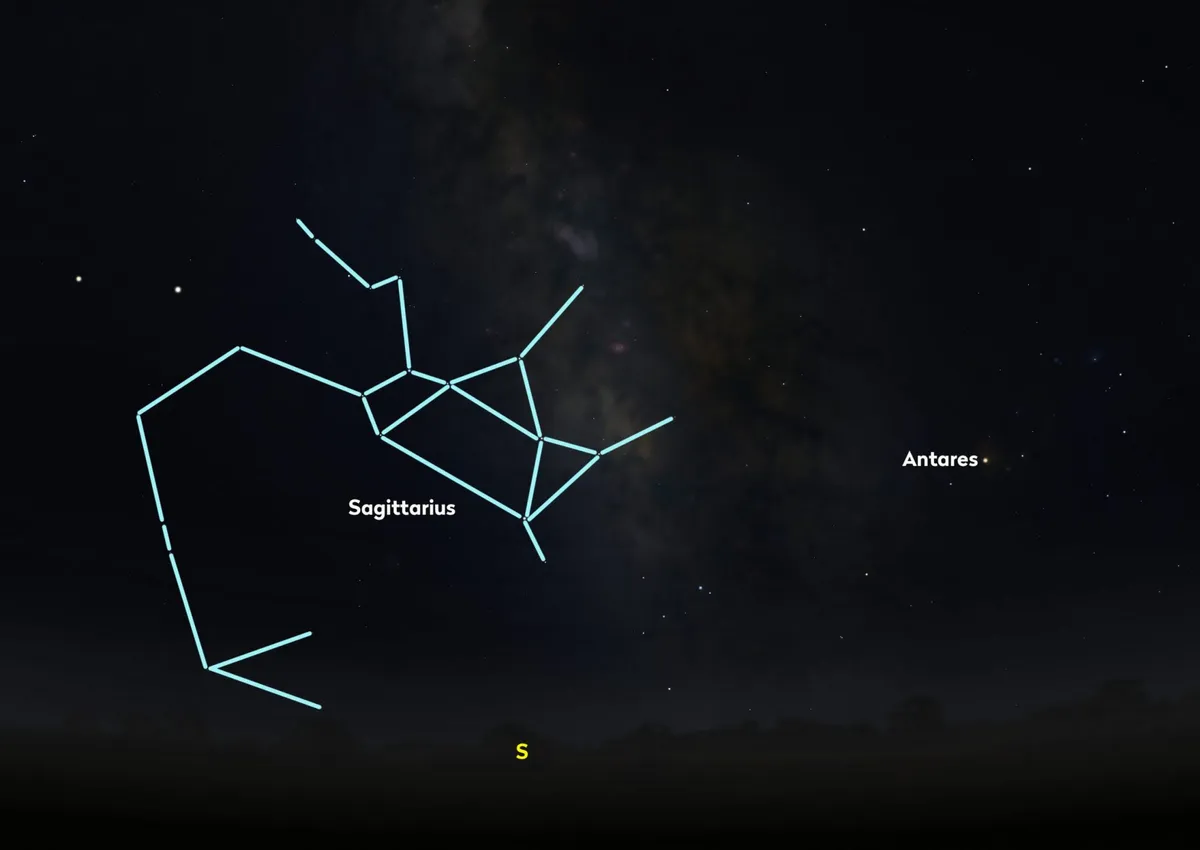
When is it visible? Low along the southern horizon all summer
Most of the Archer’s stars are dim and indistinct, but its brightest few come together to form the Teapot asterism. In August, as the nights start to get a little longer, you might be able to see what looks like a little bit of steam billowing from the Teapot’s spout.
The centre of our Galaxy is out in that direction, and that 'steam' is combined light of countless stars blending together into the milky glow that gave our galaxy its name.
These stars follow just behind the scorpion as the nights go on. Together, they’re a funny pair. Picture it: a scorpion running, screaming as a ferocious teapot chases it across the sky.
4
Corona Borealis

When is it visible? Toward the southeast in June, southwest in July, and west in August
If you follow the curve of the Plough’s handle toward the southwest, the next bright star you reach is Arcturus, in Boötes.From there, it’s just a quick hop toward the east (generally, toward the left) to Corona Borealis.
The northern crown is one of Ptolemy’s original 48, and one of the smallest of the 88 modern constellations.Its stars are all third- and fourth-magnitude, arranged in a beautiful, but incomplete ring with Alphecca in the middle.
While we often think of this as a springtime group, it’s an amazing sight setting into what seems like an impossibly slow August dusk.
5
Delphinus

When is it visible? High in the south and southeast all summer
Wrapped within the Summer Triangle are five small constellations: Lyra, Vulpecula, Sagitta, Delphinus and Equuleus.
It’s small and dim, but the first time you see it, the dolphin’s main asterism is a real “Hey, look at that!” type of sight that certainly stands out among some of the other dim stars within the Triangle.
Look for its long thin tail extending toward the south from its diamond-shaped head. I love to imagine it racing and diving across the sky as the summer goes on.
Honourable Mention: Hercules
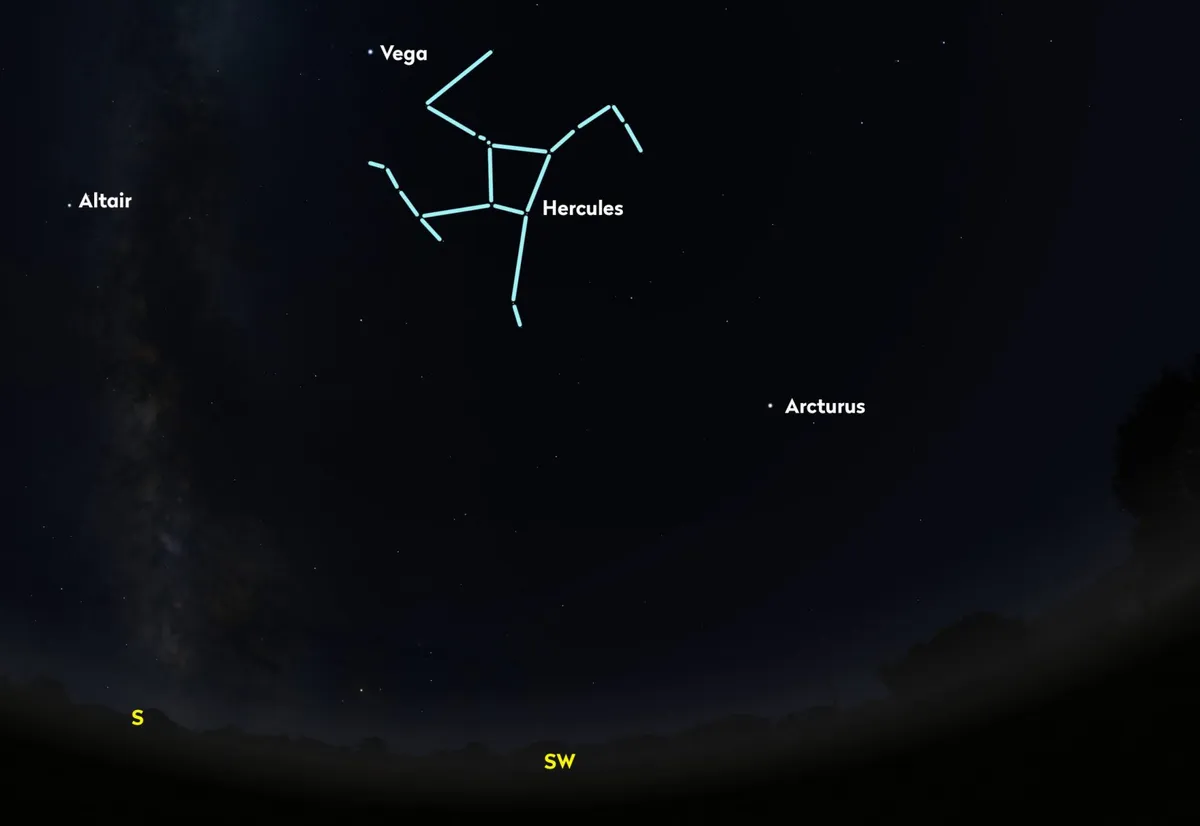
Hercules is another wonderful summer constellation, but it is high, dim, broad, and often hard to find in suburban skies. You might actually find it a little easier to see later, in autumn.
What are some of your summertime favourites? Let us know on Facebook, Twitter or Instagram.
Scott Levine is a naked-eye astronomy enthusiast based in New York’s Hudson Valley. Read his blog atscottastronomy.wordpress.com.
